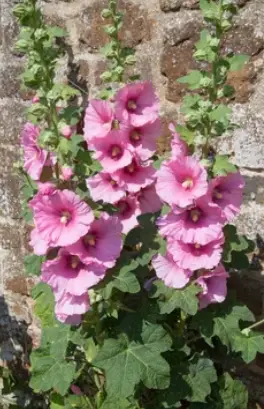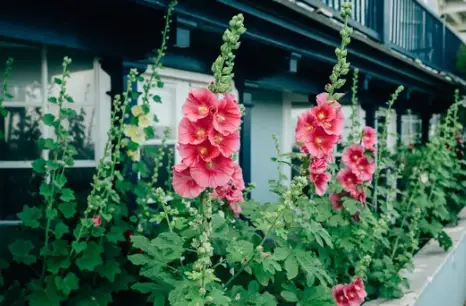Hollyhocks are classic and beautiful flowers for any garden.
With their tall spikes of brightly colored blooms, they add a touch of old-fashioned charm to any space.
However, before you start planting, it’s important to know which growing zone you are in and what type of conditions hollyhocks need to thrive.
In this blog post, we’ll dive into everything you need to know about growing hollyhocks in your zone.
Hollyhock Growing Zone

Hollyhocks are hardy plants that can grow in a range of climates.
They are generally considered to be perennials in USDA growing zones 3-9, which cover a large portion of the United States.
In zones 3-5, hollyhocks may die back in winter and reemerge in spring. In zones 6-9, hollyhocks are more likely to overwinter and come back year after year.
Soil:
Hollyhocks are not particularly picky when it comes to soil type, but they do prefer well-drained soil that is rich in organic matter.
If you have heavy clay soil, consider amending it with compost or other organic material to improve drainage.
Hollyhocks also prefer slightly alkaline soil, with a pH between 6.0 and 7.0. If your soil is too acidic, you can amend it with lime.
Sunlight
Hollyhocks need plenty of sunshine to thrive. These plants should be in a location that gets at least six hours of direct sunlight each day.
If possible, try to plant them in a location that is protected from strong winds, which can damage the tall spikes of blooms.
Water
Hollyhocks are drought-tolerant once they are established, but they do prefer regular watering, especially during dry spells. Aim to water your hollyhocks about once a week, or more often if the soil is very dry.
Fertilizer
Hollyhocks are heavy feeders and will benefit from regular applications of fertilizer, especially if you have poor soil.
Use a balanced fertilizer, such as 10-10-10, and apply it according to the instructions on the label.
Alternatively, you can feed your hollyhocks with compost or other organic matter.
Pests and Diseases

Hollyhocks can be susceptible to a number of pests and diseases, including rust, aphids, and Japanese beetles.
Regularly inspecting your plants and taking action to control any pests or diseases as soon as they are detected can help prevent more serious problems.
Propagation
Hollyhocks can be propagated from seed or from cuttings. To propagate from seed, simply sow the seeds in the spring or fall, depending on your growing zone.
To propagate from cuttings, take 4-6 inch cuttings from the tips of healthy shoots in the spring or early summer and plant them in moist soil. Cuttings should root within a few weeks, at which point they can be planted in the garden.
Deadheading
Regular deadheading, or removing spent blooms, can help encourage your hollyhocks to produce more flowers throughout the growing season. Simply snap off the spent blooms at the base of the stem, taking care not to damage the foliage.
Staking
Because hollyhocks have tall spikes of blooms, they may need staking to prevent them from falling over. This is especially true in windy conditions or if the plants are grown in a location with heavy rainfall. Simply insert a stake near the base of the plant and gently tie the stem to the stake with a soft plant tie.
Invasiveness

While hollyhocks are generally well-behaved in the garden, some varieties can be invasive and spread rapidly. To prevent this, be sure to plant hollyhocks in a location where they will not have the opportunity to spread into wild areas. Also, removing spent blooms before they go to seed can help prevent them from spreading.
Conclusion
Hollyhocks are classic and beloved garden flower plants that are easy to grow and care for.
Whether you are a seasoned gardener or a beginner, they are a great choice for adding a touch of old-fashioned charm to your garden.
With their beautiful spikes of blooms and low maintenance needs, they are sure to be a favorite in your garden for years to come.
Sources:
- “Hollyhocks: How to Plant, Grow, and Care for Hollyhock Flowers” by The Old Farmer’s Almanac.
- “Growing Hollyhocks: A Guide to Planting and Care” by Gardeners’ World.
- “Hollyhocks: Planting, Growing, and Caring for Hollyhocks” by Better Homes & Gardens.




